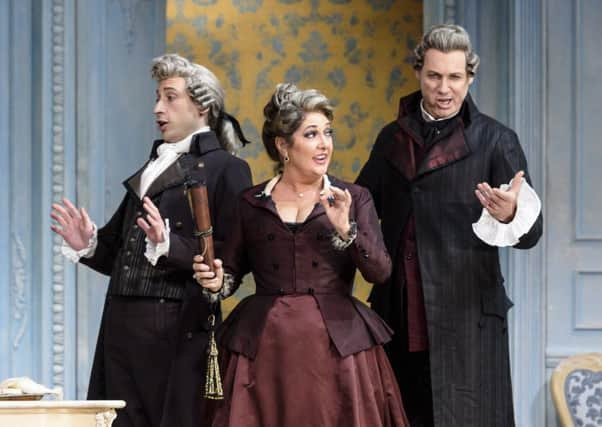Opera review: Scottish Opera '“ The Marriage of Figaro


Theatre Royal, Glasgow ****
It’s all very nice, with no attempts to sharpen the satire or paint dark colours. In a week when Donald Trump was being outed for his hideous treatment of women, I did find myself wishing for more biting comment on Count Almaviva’s unscrupulous abuse of women. But who was to know?
What we get instead is Mozart for daytime viewing. The spotlight is thrown on the music, and therein flows the adrenalin of this production, though not necessarily in the places where you might expect it.
Advertisement
Hide AdSure, Allen’s cast of buffo characters are a charmingly inclusive team, fired by nimble stagecraft and brisk interactive wit. They are evenly matched, with Anna Devin’s radiant Susanna, Ben McAteer’s solid-state Figaro, Graeme Broadbent’s majestic Bartolo, Samuel Dale Johnson’s pig-headed Count, Hanna Hipp’s testosterone-charged Cherubino and Eleanor Dennis’ stately Almaviva among the cream of the crop.
Amusing characterisations, too, from Donald Maxwell as the gardener, and another name from Scottish Opera’s past, Marie McLaughlin, bringing oodles of character to the questionable motives of Marcellina. The chorus (a veritable bunch of yokels) do a neat and tidy job.
But it’s in the pit where extraordinary things are happening. It’s been a while since the Scottish Opera Orchestra has sounded so energised and psyched up as they were on opening night under Swedish conductor Tobias Ringborg, leading from the fortepiano.
From the opening note of the overture, he has us on the edge of our seats. This is vigorous, articulate Mozart, the strings – particularly the cellos – digging in with swashbuckling determination, yet maintaining an airborne topping of refinement and clarity. Ringborg finds unexpected gems in the wind writing, like the bassoon motif that suddenly pokes through the texture to make its mischievous point. The dances sparkle with feisty, Rameau-like panache. Ringborg’s bristling musical vision is the distinguishing feature of this stage-friendly Figaro. Indeed it drives it, presenting the orchestral score as the spiritual engine room of the opera. It’s where the emotional welly of this production lies.
KEN WALTON